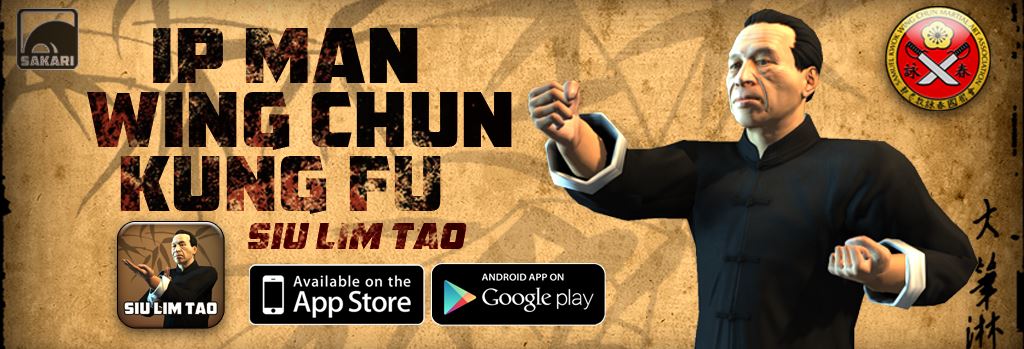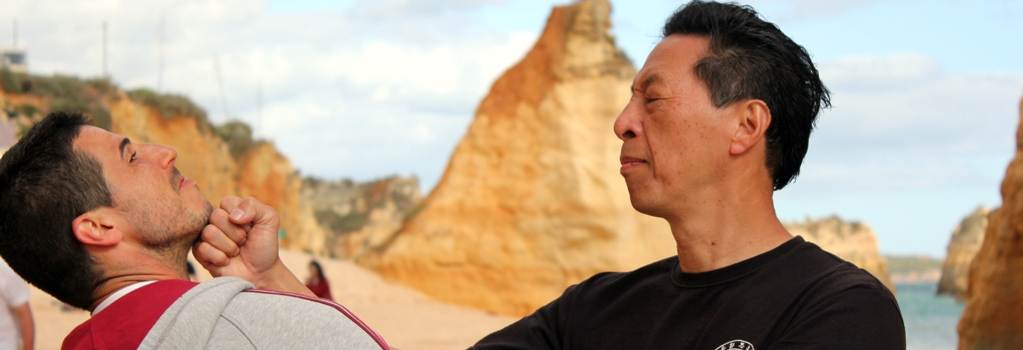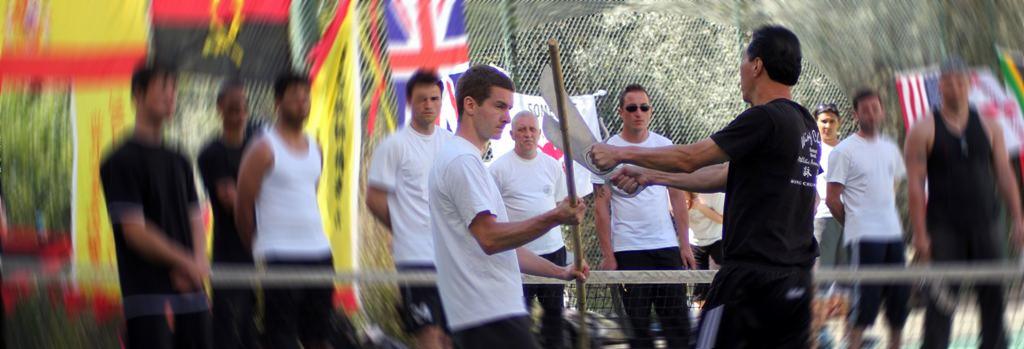My Father Ip Man
Article by Ip ching added on 24 Jul 2012. Last updated on 2 Dec 2012.
An article by Grandmaster Ip Ching
About the life of Martial arts legend Ip Man by his son Wing Chun Kung Fu Grandmaster Ip Ching.
Some of the late grandmasters life
 My late father, Master Ip Man, actively promoted the art of Wing Chun after coming to Hong Kong in 1949. In a brief period of 22 years(1950 - 1972), the art of Wing Chun blossomed in Hong Kong, Macau and Taiwan. More than that, the seeds of Wing Chun were spread throughout the world and a firm foundation was laid in the major countries of the world. During his life, excellent disciples such as Leung Sheung, Ip Bo-Ching, Chiu Wan, Bruce Lee, Lok Yiu, Chui Sheung tin, Wong Shun-leung and Ho Kam-ming were cultivated and they inherited Master Yip's wish to further develop Wing Chun.
My late father, Master Ip Man, actively promoted the art of Wing Chun after coming to Hong Kong in 1949. In a brief period of 22 years(1950 - 1972), the art of Wing Chun blossomed in Hong Kong, Macau and Taiwan. More than that, the seeds of Wing Chun were spread throughout the world and a firm foundation was laid in the major countries of the world. During his life, excellent disciples such as Leung Sheung, Ip Bo-Ching, Chiu Wan, Bruce Lee, Lok Yiu, Chui Sheung tin, Wong Shun-leung and Ho Kam-ming were cultivated and they inherited Master Yip's wish to further develop Wing Chun.
Therefore, Master Yip was held in the highest esteem by his disciples and unanimously praised as the" Master of Wing Chun" after he passed away. (My late father was humble and prudent throughout his life and he had never claimed himself as the Master of Wing Chun or the elder of any school. I mentioned this point as a warning to fellow disciples of Wing Chun who had competed to be leader of the school.)My late father could accept this title without feeling embarrassed.
My late father was born in Fatshan at the end of Ching Dynasty. Fatshan was situated at the most prosperous region of the Zheyieng Delta of Guangdong province and it was the hub of land and sea transport. From ancient time, it had been called one of the Ever Major Historical Towns of China in association with Jingde, Thuxian and Hankiou. Industry and trade, in particular handicraft trade, prospered all along and the residents lived a stable and prosperous life.
As a result, culture and art developed fully and as Chinese martial art was part of China's traditional culture and art, the trend of learn material art was very popular. Well known Masters of the South School, e.g. Wong Fai-hung, Cheung Hung-shing, Leung Chan, Leung Siu-ching etc. came from Fatshan. Master Ip was born in such an age and he was extremely fond of Chinese martial art. With talent and persistence as well as teaching by famous teachers(Chan Wah-shun at the beginning and Leung Bik, son of Leung Chan later), Master Ip Man's achievement could be envisaged.
I came to Hong Kong in 1962 and followed my father to learn martial arts. Afterwards, I assisted him in teaching Wing Chun until he passed away in 1972. I learned a lot from the way he taught. As it was the 100th anniversary of the birth Master IP Man, I would like to put forward a few points that I learned from the master's way of teaching in the hope that all " Wing Chun" disciples would learn from them and study them.
The Master put great emphasis on the selection of talent. He always said," no doubt it is difficult for a disciple to select a teacher, but it is even more difficult for a teacher to select a disciple". It was extraordinary for someone who taught martial art for a living to have such a mentality. This meant that he was serious in his attitude and responsible to the disciples he taught. Throughout his life, the Master had neither hung up a signboard nor put up enrolment advertisement. The aim for this was just to reserve" the active right to select disciple". The Master adhered to this principle strictly for the past 20 years. It was commendable for someone who taught martial art for a living.
Wing Chun is practical, simple and direct without any fancy element. The Master put great emphasis on the basic training of the new disciples. When he taught them Siu lim Tau, he imposed no time constraint on the learning of correct stance, co-ordination of the waist and the stand as well as the use of strength. He would teach a new topic only after the disciple could prove that he could meet his requirement. He would never teach perfunctorily. This was in fact, a kind of award to those who worked hard to meet the requirement.
Another characteristic of the Master's way of teaching, was teaching a disciple according to his aptitude. He would thoroughly analyze the mentally, character, physical fitness, physique, education standard, cultural accomplishment as well as power of absorption of the disciple first. Then he would teach him ways and means according to the different needs of individual to make sure that every disciple would absorb and learn easily. In the course of teaching, the Master placed a lot of importance in practicing a show and free combat. The aim was to nurture disciple's love of and confidence in Wing Chun so as to guide him to study the rules of Wing Chun and the wooden dummy.
Apart from great attainments in Wing Chun, the Master received advanced education in his youth. Moreover, he continued to absorb modern scientific knowledge. Therefore, he could always make use of present day's technological knowledge such as mechanic and mathematics theories to explain the rules of Wing Chun.
The Master could even give up unintelligible wordings such as the Five Elements, Eight Diagrams and mutual promotion and restraint between the Five Elements that were commonly used in metaphysics. This helped purification of martial arts and this was also the secret for the Master to achieve such high attainment.
The Master had never said and even detested anyone who said," I met a genius or hermit who taught me extraordinary skill or unique move in martial art" to cheat his disciple and to promote himself. He thought that such person had no confidence in what he had learnt and he was extremely shallow in the rules of martial art. He only wished to scare people by telling this kind of specious story. Such person was doomed to failure by using this kind of unsubstantiated means to teach martial art. The secret of the Master's way of teaching was not limited to the above points. I hope that fellow disciples will explore more meaningful points in the future.
Tags for this article:
Ip ManHistoryIp ChingWing ChunChan Wah ShunWong Fai HungLeung BikKung Fu



